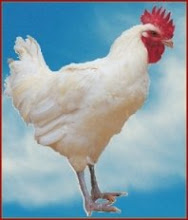
While doing a bit of Spring cleaning in my pantry, I came across a bag of fresh chestnuts that were left over from the Holiday Season. (OK, not so fresh, but still good!) The last thing that I think about as Spring approaches is chestnut anything! Sadly, in the U.S. we have been conditioned to think of chestnuts as purely Christmas-time fare. Once the holidays are over and chestnuts are no longer roasting over an open fire, we don't even consider eating them. It's too bad because chestnuts are not only delicious, but they are also extremely good for you! Nutritionally, they are comparable to brown rice and are extremely low in fat. Chestnuts are also packed with vitamin C (Source). A perfect gift from nature that is ignored for 10 months of the year!
Finding the chestnuts got me thinking about food supplies at this time of the year. Winter is ending and Spring is just beginning (in the Northern Hemisphere, of course). In the past, our ancestors would still be surviving off of their Winter food stores. Chestnuts would surely be in their pantry, as the dried "nut" keeps indefinitely. Meals would include many preparations made from the chestnut, be they roasted, boiled, pureed, turned into breads, or made into desserts. In parts of Europe and Asia, the chestnut was the starch of choice before the introduction of the potato, or in areas where cereal grains would not grow (Ibid).
So why don't we eat them? Why have they become a ceremonial object, like cranberry sauce? I can only think that it is because people don't know what to do with them. Also, I believe that people fear them because "nuts" are viewed as fattening ingredients used in desserts or as quick snacks. As stated above, chestnuts are not fattening, and they are anything but "quick"! They need some work to become palatable. So that leaves just not knowing what to do with them. Not knowing is not an excuse to miss out on something this good, so below I give a procedure for processing fresh (or not so fresh) chestnuts and a recipe that is fitting for this transitional time between Winter and Spring.
 To Peel Fresh Chestnuts
To Peel Fresh ChestnutsThe following is the procedure that I use to peel fresh chestnuts. There are other ways to do it, but this method works well. Also, keep in mind that older chestnuts are easier to peel as the "nut" has begun to shrink away from the skin due to moisture loss.
- Soak chestnuts in warm water for 1 hour. Preheat oven to 500 degrees.
- Drain the chestnuts and pat dry.
- Using a small knife, make a shallow slit in the rounded side of the chestnut. Do not cut too deeply as you do not want to gouge the "nut" itself.
- Place chestnuts on a baking sheet and roast in the oven for 10 to 15 minutes.
- Remove from the oven, place in a bowl, cover with a moist towel, and allow to steam/cool for 5 minutes.
- Remove chestnuts from their shells. Be sure to remove all of the brown inner skin, it is tannic and bitter.
- Chestnuts are now ready for further cooking.
At this point, I like to gently simmer my chestnuts (in a covered pot), in flavorful stock or water for savory preparations, or in a sugar syrup for sweet preparations for about 45 minutes to 1 hour. Older, drier chestnuts will naturally take longer to cook. They are done when tender. Keep checking them and be careful not to overcook them unless you plan on pureeing them, as they will fall apart. At this point you can use them, or freeze them using the IQF procedure.
Sauteed Asparagus with Veal Glazed Chestnuts
Serves 4 to 6
- 2 bunches thin, young, green asparagus spears
- 1 cup cooked chestnuts**, halved
- 1/4 cup chicken or brown veal stock
- 3 tablespoons veal glaze (glace de veau)
- 4 tablespoons finest quality unsalted butter
- fleur de sel and pepper to taste
Wash and drain asparagus spears. Cut bunches in half. Retain top half, discard bottom half or save it for an asparagus soup. Set tops aside.
Place chestnut halves, stock, and veal glaze in a small pot. Cook over medium heat until liquid evaporates and chestnuts begin to look glazed. Season lightly with fleur de sel and pepper. Keep warm.
Place a large saute pan over medium-high heat. Add 3 tablespoons of the butter to the pan, be careful not to burn. Once melted and hot, add the asparagus tops. Season with fleur de sel and pepper. Saute the asparagus until it begins to brown lightly.
To finish, rewarm the chestnuts over low heat. Add the final tablespoon of butter and mix gently until butter is incorporated. Arrange asparagus on a serving dish and spoon chestnuts and glaze over. Serve immediately while hot.
** If you don't have any fresh chestnuts left from the holidays, you can still make this recipe using store-bought, vacuum-packed, whole chestnuts. They are just as good, but a little pricey!










4 comments:
This recipe sounds like a nice combo. Too bad I had saved some of my chestnuts from the Holidays.
You can still make the recipe using store-bought, vacuum-packed, whole chestnuts.
Hey, Dennis,
Loved your post on chestnuts. Really appreciated your sharing your technique. I must try this way! I've got a recipe for Chestnut Soup, and the whole family loves it. Yes, we can't just have this over the holidays!
Jen
Thanks for sharing. The soup sounds great!
Post a Comment